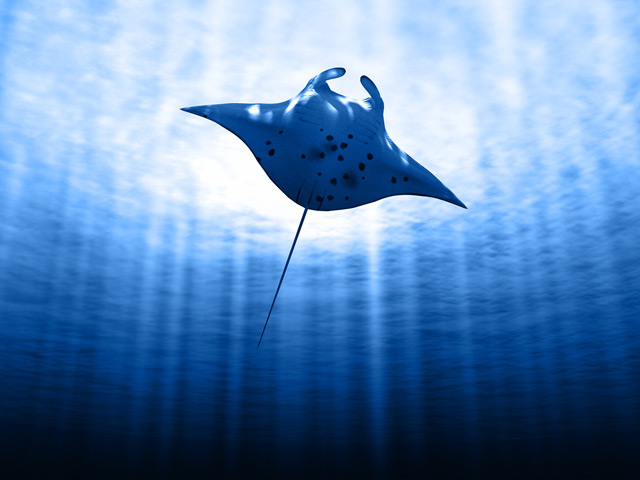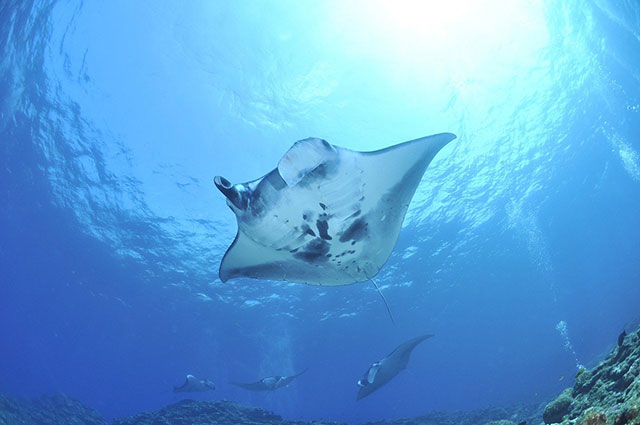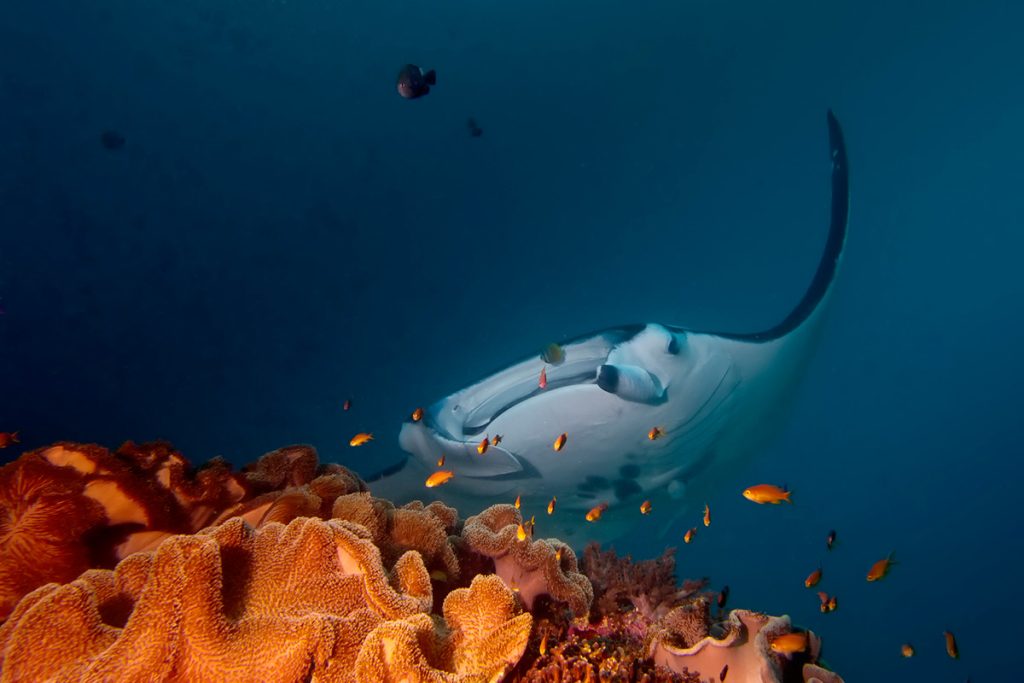Manta rays gather at D’Arros Island (Amirante Group) and at St. Francois Atoll (Alphonse Group) in the Seychelles, research group reveals after over a decade of study.
Using photo-identification techniques and a novel remote underwater camera system, a team of researchers led by Dr Lauren Peel, aided by citizen scientists, examined the population sizes and frequented areas of reef manta rays (Mobula alfredi) in Seychelles.
 Image: DepositPhotosImage: DepositPhotos
Image: DepositPhotosImage: DepositPhotosDespite increasing pressure from fisheries in the Western Indian Ocean, manta ray populations in Seychelles previously remained poorly understood.
Jump to…
Where in the Seychelles do the mantas go?
Located in the Western Indian Ocean, Seychelles is a remote archipelago of 115 tropical islands. It is divided into the inner, more populous islands, and the more remote outer islands. It is at the outer islands where the manta rays gather, at cleaning stations.

How to identify individual manta rays?
Each manta ray has a unique pattern on its underside. Using photographic identification and GPS position, the researchers could distinguish each one and note where and when they were seen.

How many manta rays?
A total of 1582 sightings of 241 individual manta rays were reported throughout Seychelles. MantaCam captured 203,277 photographs, of which 3146 were manta rays. On just one day in 2017, the camera recorded 174 photos of manta rays.
The relatively small population of manta rays observed (compared to the Maldives say), is probably due to the small number of observers and available monitoring resources. The study recorded only a fraction of the population of reef manta rays likely to exist in the Seychelles archipelago as a whole.
Recognising the behaviour of manta rays
Four primary behaviours were recognised: feeding, courtship, cleaning and cruising.
Feeding
When individual manta rays have unfurled cephalic fins, while swimming with the mouth open, then they are feeding. The rays often formed ‘chains’, swimming in a single file, and sometimes execute backward somersaults through the water column while feeding.

Courting
Courtship was characterised by one or more males actively pursuing a single female, while not engaged in feeding, cleaning or cruising behaviours.
Cleaning Stations
Cleaner fish wait in position over sections of reef. The manta rays linger here while the cleaner fish eat the parasites on their skin. Visits to the cleaning station lasted an average of nearly 5 minutes, although visits lasting 1 minute were the most frequent. The mantas preferred to visit in the middle of the day, between 10 am and 3 pm.
 Image: Deposit PhotosImage: Deposit Photos
Image: Deposit PhotosImage: Deposit PhotosConservation of manta rays
The current lack of a targeted manta ray fishery in Seychelles, coupled with the remote nature of the archipelago and aggregation areas, serves to protect local manta ray populations from the pressures of increased human populations. However, the rays are still caught as by-catch, and get entangled in discarded fishing gear, particularly around the populated Inner Islands where fishing pressures are greatest.
It is hoped that the Marine Spatial Plan, announced by the Government of Seychelles in 2020 will give some protection to these vulnerable animals.
Further Reading
Peel, L.R., Meekan, M.G., Daly, R. et al. Remote hideaways: first insights into the population sizes, habitat use and residency of manta rays at aggregation areas in Seychelles. Mar Biol 171, 83 (2024). https://doi.org/10.1007/s00227-024-04405-6
Image credits:
- manta ray and diver: deposit photos
- manta-ray-below: DepositPhotos
- manta ray: Deposit Photos
